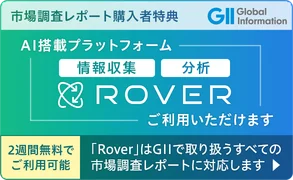
|
市場調査レポート
商品コード
1808431
航空燃料市場:燃料タイプ、航空機タイプ、燃料形態、エンドユーザー別-2025年~2030年の世界予測Aviation Fuel Market by Fuel Type, Aircraft Type, Fuel Form, End-User - Global Forecast 2025-2030 |
||||||
カスタマイズ可能
適宜更新あり
|
|||||||
| 航空燃料市場:燃料タイプ、航空機タイプ、燃料形態、エンドユーザー別-2025年~2030年の世界予測 |
|
出版日: 2025年08月28日
発行: 360iResearch
ページ情報: 英文 195 Pages
納期: 即日から翌営業日
|
概要
航空燃料市場は、2024年には2,515億2,000万米ドルとなり、2025年にはCAGR 7.16%で2,690億米ドルに成長し、2030年には3,809億3,000万米ドルに達すると予測されています。
| 主な市場の統計 | |
|---|---|
| 基準年2024年 | 2,515億2,000万米ドル |
| 推定年2025年 | 2,690億米ドル |
| 予測年2030年 | 3,809億3,000万米ドル |
| CAGR(%) | 7.16% |
航空燃料のファンダメンタルズ、サプライチェーンの現実、そして今日の業界の意思決定を形成しているオペレーションと持続可能性に関する緊張に対する戦略的方向性
航空燃料をめぐる情勢は、長年にわたる運航上の要件と、加速する環境、地政学的、供給サイドからの圧力とが交差するところにあります。航空事業者、燃料メーカー、規制当局は、信頼性、安全性、コスト効率と、脱炭素化、貿易政策や原料調達の変化への対応という要請とのバランスを取りながら、転換期を乗り切っています。このような状況において、本書はベースラインとなる用語、精製、流通、運航に関わる主な利害関係者、調達と展開の決定に影響を与える要因について、明確な視点で解説します。
技術的、規制的、地政学的な力の収束により、航空燃料供給、認証経路、調達戦略が再編成され、業界が迅速に適応できるようになっています
航空燃料の情勢は、技術的成熟、規制の強化、地政学的ダイナミクスの変化が組み合わさった変革的なシフトの最中にあります。持続可能な航空燃料は、政策的インセンティブ、企業の脱炭素化コミットメント、航空会社とのオフテイク契約の増加によって、パイロットプロジェクトから商業規模の経路へと移行しています。原料処理の改善、ドロップイン燃料の認証パスウェイ、SAF生産能力への資本投資の増加により、採用への技術的障壁は減少しています。
米国における2025年までの累積関税変更により、調達経済性、サプライチェーンの弾力性、航空燃料流通における投資の優先順位がどのように変化しているか
2025年までに制定または調整された米国の関税措置の累積効果は、必ずしも燃料生産の技術的基礎を変えることなく、航空燃料エコシステム全体のコスト構造とサプライチェーンの決定を変化させています。精製製品や主要中間体に対する関税の引き上げは、一部の精製業者や販売業者に、国境を越えた調達を再評価し、国内または近海での調達戦略を加速させる動機付けとなりました。こうした調整は、より長期的な契約パターンと、関税変動の影響を受けにくい安定した原料ストリームの確保に重点を置くという形で現れています。
燃料等級、航空機の運航、燃料形態、多様なエンドユーザープロファイルを、実行可能な供給と展開の選択に結びつける、セグメント主導の航空燃料に関する視点
セグメンテーションは、マクロ動向を燃料ポートフォリオや顧客ベースの運用行動に反映させるための実用的なレンズを提供します。燃料のタイプに基づき、業界は従来型燃料とサステイナブル燃料に区別されます。従来型カテゴリー自体は、アガス、ジェットA、ジェットA-1、ジェットBを含むいくつかの精製製品で構成され、それぞれが、流通ネットワークや給油作業に影響を与える明確な取り扱い、保管、仕様要件を持っています。エンドユーザーとオペレーターは、多様な運用プロファイルで複数の燃料等級を管理する必要があり、混合戦略は燃料系列によって異なることが多いため、これらの区別は重要です。
供給戦略と競争上の位置付けを決定する、南北アメリカ、欧州、中東・アフリカ、アジア太平洋の地域力学とインフラの現実
地域は、航空燃料の利害関係者にとっての事業運営上の現実と戦略的機会の両方を形成します。南北アメリカでは、確立された製油所インフラと持続可能な航空燃料に対する航空会社の強いコミットメントが、原料革新と地域サプライチェーン最適化のためのダイナミックな環境を作り出しています。南北の供給連鎖と内陸物流の課題も、精製業者や流通業者が貯蔵ハブやパイプラインの接続をどのように設計するかに影響を与えます。
航空燃料生産、流通、持続可能な燃料開発におけるリーダーシップを定義する競合のポジショニング、パートナーシップモデル、業務能力に関する考察
航空燃料の競争力は、レガシーリファイナー、総合エネルギー企業、SAF専門メーカー、ロジスティクスプロバイダー、空港給油オペレーターを組み合わせたエコシステムによって形成されています。主要企業は、SAF生産能力への選択的な投資を行い、航空会社との引取契約を開発し、資本集約的なプロジェクトのリスクを軽減するためにコンソーシアムを形成しています。原料供給業者と生産業者、航空会社と燃料引取業者間のパートナーシップは、量を確保し、技術的リスクを共有し、バリューチェーン全体のインセンティブを調整するため、ますます一般的になってきています。
持続可能な航空燃料のスケールアップにおいて、供給の弾力性、インフラの準備、戦略的投資のバランスをとるために、経営幹部がとるべき実行可能な提言
業界のリーダーは、短期的な操業回復力と持続可能な道筋への計画的な投資のバランスをとる二本立ての戦略を採用すべきです。第一に、原料供給源を多様化し、主要空港ハブにおける貯蔵の柔軟性を強化し、関税や貿易のシフトに対応して適応的な調達を可能にする契約条項を組み込むことによって、サプライチェーンの弾力性を強化します。第二に、オフテイク契約、合弁事業、資本参加を通じてSAF生産者との統合を加速させ、低炭素量へのアクセスを確保し、インセンティブ・プログラムやコンプライアンス・メカニズムの適用を受ける資格を得る。
利害関係者インタビュー、政策分析、サプライチェーン・マッピングを組み合わせた調査手法の透明性と複数ソースの検証により、確固とした結論・提言を支えます
本サマリーの基礎となる調査統合は、機能横断的な情報源と混合手法のアプローチを統合し、ロバストで再現性のある結論を保証するものです。一次インプットには、製油所経営者、航空会社燃料調達チーム、ロジスティクス・プロバイダー、認証機関への構造化されたインタビューとブリーフィングが含まれ、業務上の制約と現実の意思決定ヒューリスティックスを浮き彫りにしました。二次分析では、公共政策発表、技術標準文書、貿易データを活用し、サプライチェーンの動向と関税シフトを明らかにしました。
長期的な航空セクターの競争力のために、運航の回復力と持続可能な燃料投資が相互に補完的な役割を果たすことを強調する結論の総合的考察
結論は、航空燃料戦略はますます多次元的なものとなり、調達、オペレーション、持続可能性、規制への関与にまたがる協調的行動を必要とするという中心的洞察を総合するものです。関税の変動やロジスティクスの制約により、一時的な供給リスクが発生するため、短期的な運用の機敏性は引き続き不可欠であるが、中期的な軌道は、的を絞った投資と協調的な契約を必要とする低炭素燃料経路に向かっていることは間違いないです。成功する組織は、燃料の取り扱いや混合における技術的能力を、原料や生産へのアクセスを確保しつつ、政策の変化にも適応できる商業的構造と統合する組織であろう。
目次
第1章 序文
第2章 調査手法
第3章 エグゼクティブサマリー
第4章 市場の概要
第5章 市場力学
- 世界の主要航空会社と空港における持続可能な航空燃料ブレンド義務の急速な導入
- 精製プロセスの効率と持続可能性を向上させる技術革新
- 持続可能性リスクを軽減するための商業規模のバイオ燃料原料多様化プロジェクトの拡大
- 新たな炭素税と排出量取引制度が航空燃料調達戦略に与える影響
- 持続可能な供給拡大に向けた石油大手と航空会社の戦略的提携
- 水素と電気推進調査への投資動向が将来の需要を再構築
- 透明性の高いサプライチェーンのためのブロックチェーン対応トレーサビリティシステムの実装
第6章 市場洞察
- ポーターのファイブフォース分析
- PESTEL分析
第7章 米国の関税の累積的な影響2025年
第8章 航空燃料市場:燃料タイプ別
- 従来型燃料
- 航空ガス
- ジェットA
- ジェットA-1
- ジェットB
- 持続可能な燃料
第9章 航空燃料市場:航空機タイプ別
- 固定翼
- 回転翼
第10章 航空燃料市場:燃料形態
- ブレンド
- ガス
- 液体
第11章 航空燃料市場:エンドユーザー別
- 商業用
- 政府および公共部門
- 軍隊
- プライベート
第12章 南北アメリカの航空燃料市場
- 米国
- カナダ
- メキシコ
- ブラジル
- アルゼンチン
第13章 欧州・中東・アフリカの航空燃料市場
- 英国
- ドイツ
- フランス
- ロシア
- イタリア
- スペイン
- アラブ首長国連邦
- サウジアラビア
- 南アフリカ
- デンマーク
- オランダ
- カタール
- フィンランド
- スウェーデン
- ナイジェリア
- エジプト
- トルコ
- イスラエル
- ノルウェー
- ポーランド
- スイス
第14章 アジア太平洋の航空燃料市場
- 中国
- インド
- 日本
- オーストラリア
- 韓国
- インドネシア
- タイ
- フィリピン
- マレーシア
- シンガポール
- ベトナム
- 台湾
第15章 競合情勢
- 市場シェア分析, 2024年
- FPNVポジショニングマトリックス, 2024年
- 競合分析
- Exxon Mobil Corporation
- Shell Plc
- Abu Dhabi National Oil Company
- Aemetis, Inc.
- Amyris, Inc.
- Axens SA by IFP Energies nouvelles SA
- BP PLC
- Chevron Corporation
- China National Petroleum Corporation
- CleanJoule, Inc.
- DGFuels, LLC
- ENEOS Corporation
- Enertrag SE
- Eni S.p.A.
- Fulcrum BioEnergy, Inc.
- Gevo, Inc.
- HIF Global by Andes Mining & Energy S.A.
- Honeywell International Inc.
- Indian Oil Corporation Limited
- INERATEC GmbH
- KBR, Inc.
- LanzaTech Global, Inc.
- Linde PLC
- Lummus Technology LLC
- Maire Tecnimont S.p.A.
- Mitsubishi Chemical Corporation
- Montana Renewables, LLC by Calumet Inc.
- Neste Corporation


